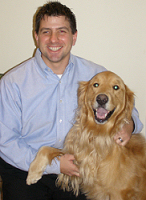Sports Injuries
by Dr Jim Hendricks, Freeport Integrated Health Center, Freeport, Maine Two of the most common questions that I get about sports injuries are what to do immediately after the injury and how to determine if the injury is severe enough to warrant medical attention? So how do you know when you are serious injured or just sore or hurt?
Two of the most common questions that I get about sports injuries are what to do immediately after the injury and how to determine if the injury is severe enough to warrant medical attention? So how do you know when you are serious injured or just sore or hurt?
The most common acute injuries that I typically see from athletics are muscular sprains/strains, ligament injuries, fractures and of course your typical cuts, bumps and bruises. For the athlete, the most important concern is usually “Can I still play?” That is why it is important to distinguish between serious and minor injuries.
Muscular sprain/strains or “pulls” are injuries to the muscles and tendons from stretching or exerting some part the muscle beyond its normal length. Muscles are attached to bones by tendons and the tendons are what allow the contraction of the muscles. When there is an injury to the muscle it can become stretched or torn and muscular strains are graded according to their severity. First degree sprains are a mild injury to the tendon and or muscle and will cause pain, swelling and muscular spasm. Second-degree muscle strains involve more tearing of muscle or tendon fibers and along with above symptoms, there will be a loss of muscular strength and a bleeding of the muscle that will result in an ecchymosis (black and blue) at the site of injury. Third degree strains are a complete rupture of the muscle or tendon from the bone. In this case, there will be a complete loss of muscle function.
Joint sprains are injuries that occur when a joint is suddenly moved or forced beyond its normal range of motion and the ligaments are severely stretched or torn. Ligaments connect adjacent bones together to give support and stability to joints. Sprains cause the injured joint to become weak and unstable. How badly the ligaments are damaged defines the degree of injury. A first-degree sprain is a minor stretch of the ligament while the integrity of the joint remains intact. Usual symptoms include mild pain and swelling. With a second degree sprain the ligament stretch is more severe causing a partial tear of the ligament. This will result in increased pain, swelling and bleeding at the site of injury causing an ecchymosis at the site of the injury. Third degree sprains occur when the ligament is completely torn or ruptured. Ruptures are joint injuries in which the fibers of the supporting ligaments become torn but the ligament does not remain in tact. Ruptures occur usually from a direct blow to the joint. For example, being struck on the outside of the knee in football, which can lend to derangement of the ligaments of the knee. If the force of the contact is more than the joint can withstand, it can result in ligament rupture. The resulting effect is severe pain, swelling and joint instability. Ruptured ligaments usually must be surgically repaired and the healing time can be many months.
Fractures develop from force or stress applied to bone, which is beyond its normal range. Fractures can be minor cracks, splintering, crumbling or complete disruption of the bone. If the skin remains intact the fracture is consider closed or simple. If the bone breaks the skin the fracture is considered open or compound. Fractures will result in pain, swelling, loss of range of motion, joint instability and in more severe cases possible nerve or vascular damage. Fractures will usually cause more pain at rest than other injuries and the pain will get worse with time. It is extremely important to distinguish a fracture from other injuries. To be on the safe side, if you think you may have a fracture then get an X-ray to find out for sure. The treatment of fracture depends usually on the severity. Most uncomplicated fractures are immobilized with a cast until the bone heals.
For all acute injuries, I recommend to act immediately and aggressively. Treating the injury immediately can greatly reduce the recovery time with most sprains and strains. It is best to always remember this acronym: P.R.I.C.E.S.: PROTECTION, REST, ICE, COMPRESSION, ELEVATION & SUPPORT. Immediately Ice the injured area to reduce swelling and any bleeding. Use a compressive bandage to wrap the area thus reducing more swelling, giving the area support and protecting it from re-injury. Rest the area and avoid activity that will put stress on the injury site. Lastly, elevate the area above the level of the heart to assisting the reduction of the inflammation.
After using the above principles the treatment of acute injuries should include a trip to your doctor. Your doctor will be able to determine the degree of injury and make further recommendations for injury care or rehabilitation.
Here at FIHC we have had great success with the treatment of athletes and sports/recreation types of injuries. We pride ourselves on patient care and strive to schedule new patients on the same days a they call.
Dr. Jim Hendricks is a doctor of chiropractic at Freeport Integrated Health Center in Freeport. His undergraduate education is in Sports Medicine and he is Certified Strength and Conditioning Coach. For more information go to https://www.freeport-chiro.com/
Herb's Tips and More
-
 Did you know that you can make soap, candles and lotion with your herbs?
Did you know that you can make soap, candles and lotion with your herbs? -
 Never take any herb identity for granted. The best way to be sure that you are using the right kind of herb is by buying it.
Never take any herb identity for granted. The best way to be sure that you are using the right kind of herb is by buying it. -
 Excellent health articles whether you are looking for information or inspiration regarding preventive health or are dealing with a medical
challenge.
Excellent health articles whether you are looking for information or inspiration regarding preventive health or are dealing with a medical
challenge.









